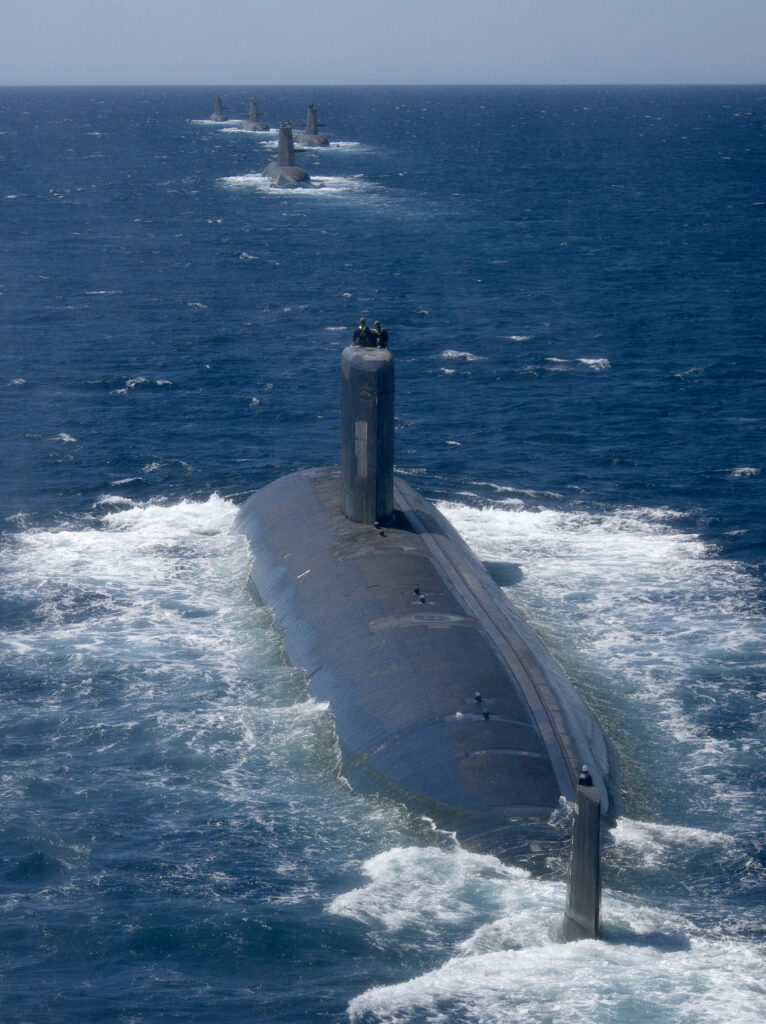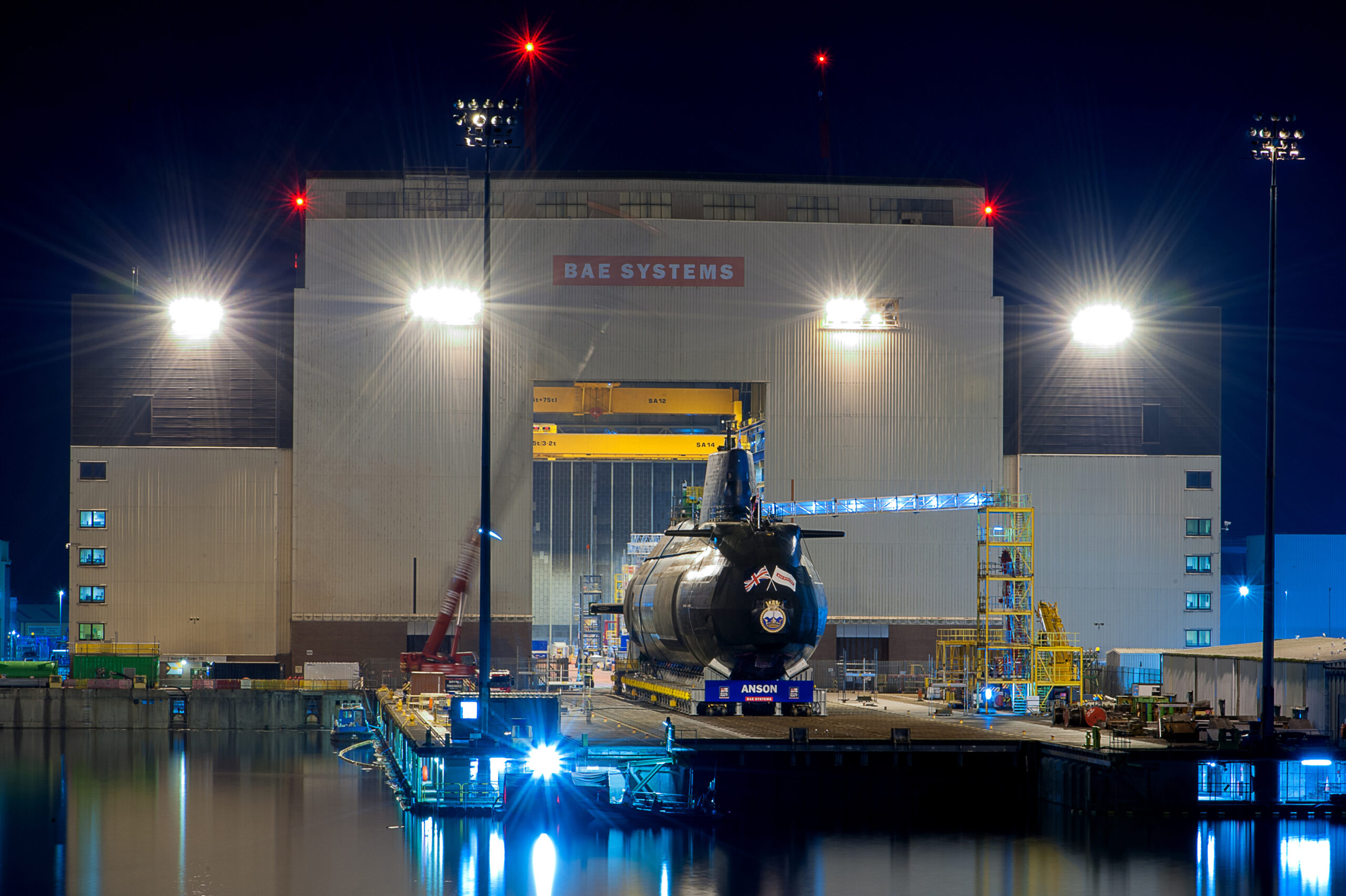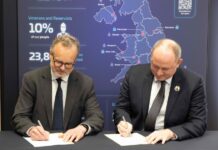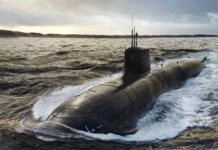
AUKUS Submarine (SSN-AUKUS): Status Update
Conrad Waters
A major element of the trilateral AUKUS defence security partnership between Australia, the United Kingdom and the United States that was first announced in September 2021 is to support the acquisition of conventionally-armed, nuclear-powered attack submarines (SSNs) for the Royal Australian Navy. Subsequently, in March 2023, a pathway to the achievement of this capability was revealed. This will ultimately see a trilaterally developed submarine – SSN-AUKUS – based on the United Kingdom’s next-generation design but incorporating American submarine technologies entering service with both the Royal Navy and Royal Australian Navy. Given that construction of the new boats is scheduled to begin before the end of the current decade for delivery from the late 2030s onwards, the programme needs to be delivered at pace if the desired timetable is to be achieved. This article provides an update on progress to date.
The AUKUS trilateral security partnership
Heralded as a landmark agreement that “will help sustain peace and stability in the Indo-Pacific region”, the AUKUS trilateral security partnership announced by the three countries leaders in September 2021 was essentially a response to China’s increasingly assertive stance as a regional power. The first initiative taken under the new agreement, sometimes referred to as ‘Pillar 1’ was to support the Royal Australian Navy’s acquisition of a strengthened underwater capability based around nuclear-powered but conventionally-armed submarines. Significantly, the decision involved abandonment of Australia’s previous plans to construct a class of twelve diesel-electric Attack class submarines to Naval Group’s ‘Shortfin Barracuda’ design in a major setback for the French group. The increased speed, endurance and flexibility provided by nuclear propulsion compared with the more incremental improvements offered by the Attack class against the backdrop of a deteriorating security environment was probably the main factor in this decision.

Credit: Crown Copyright 2023
The announcement launching the AUKUS pact stated that the partner countries would immediately embark on an 18 month effort to seek “an optimal pathway” to deliver the new Australian capability. Subsequently, a joint steering group comprising senior officials from all three countries met on 12 occasions between December 2021 and February 2023 to determine the way forward. This steering group examined a wide range of potential options for Australia’s acquisition of SSNs. This led to a further joint announcement by the nations’ leaders on 13 March 2023 setting out how pillar 1 of AUKUS was to be achieved.
The agreed pathway involves a phased approach to the introduction of the Australian SSN capability. This has four major stages, namely:
- The embedding of Australian naval and civilian personnel within the American and British fleets and associated industrial bases from 2023 onwards. This is to be accompanied by a steady increase in visits by Royal Navy and US Navy SSNs to Australian ports.
- The commencement of forward rotations of American and British SSNs to Australia from 2027 onwards to accelerate the development of personnel, infrastructure and regulatory capabilities needed to establish a sovereign capability to operate SSNs.
- The purchase of three Virginia (SSN-774) class submarines from the United States – with potential options for two more – from the early 2030s onwards.
- The development of the British based SSN-AUKUS submarine for construction both in Australia and the United Kingdom for service in the respective countries’ fleets. It is intended that the Royal Navy submarines will start to enter service from the late 2030s and be followed by the Australian boats early in the following decade.
Significant steps have already been taken to implement the early stages of this optimal pathway. For example, Australian personnel have started to be embedded in the British military and AUD 1.5 billion (USD 1 billion) has been approved for early priority works at the HMAS Stirling naval base in Western Australia to prepare the facility for SSN rotational deployments. This forms part of a wider package of AUD 18 billion (USD 12 billion) earmarked for construction and support infrastructure in South and Western Australia over the next decade to bring the endeavour closer to completion. Meanwhile, signature of the US National Defense Authorization Act for FY2024 in December 2023 provided the legislative agreement needed by the Biden administration to implement key parts of the pathway, including the future transfer of Virginia class submarines, the training of Australian personnel and the simplification of onerous US export control requirements. It has been reported that Australia will provide USD 3 billion to the United States in coming years to help ease bottlenecks in American SSN construction.

Credit: US Navy
SSN-AUKUS
Although the delivery of SSN-AUKUS forms the final phase of the critical pathway to provide Australia with a SSN capability, the long lead times associated with the design and construction of a new submarine mean that time is short if planned deadlines are to be met. In particular, SSN-AUKUS requires substantial investment in expanding British infrastructure to build and maintain submarines whilst also creating an entirely new sovereign Australian industrial base in this sphere.
The foundation for the SSN-AUKUS submarine is the previous British Submersible Ship Nuclear Replacement (SSNR) programme, which was originally intended to provide the successor to the Royal Navy’s Astute class boats. This programme started to gain traction in September 2021 when BAE Systems and Rolls-Royce were each awarded contracts valued at GBP 85 million (USD 107 million) to undertake three years of conceptual design studies for the submarine platform and its nuclear propulsion. In essence, SSN-AUKUS will be based on this SSNR conceptual work, whilst also benefitting from a number of American submarine technologies. These have been stated to include elements of the propulsion plant, a common vertical launch system, and weapons. The AUKUS partners also intend to develop a joint combat system evolved from the AN/BYG-1 Combat Control System found aboard both the Virginia class and also Australia’s current Collins class submarines. Although there has been much speculation, few tangible details of likely design characteristics have emerged to date.

Credit: BAE Systems
Delivery of the British element of SSN-AUKUS is being overseen by the Submarine Delivery Agency, an executive agency of the UK Ministry of Defence. The plan for the construction of SSN-AUKUS envisages fabrication commencing at BAE Systems’ Barrow-in-Furness facility in Cumbria towards the end of the 2020s. The shipyard is currently heavily committed to delivering the final members of the Astute class, as well as the new Dreadnought strategic submarines. Having rundown its workforce in the Cold War’s aftermath to a low of fewer than 5,000, the facility has been steadily expanding employment in recent years and further expansion is on the cards. BAE Systems anticipates its submarine workforce will peak at around 17,000 (compared with today’s 13,500) to support SSN-AUKUS. It is also envisaged that the shipyard’s facilities will double in size to around 160,000 m² over this time. Nevertheless, it is recognised that transition to production of SSN-AUKUS will exacerbate pressures on an already stretched supply chain, with the involvement of elements of Australian industry with the relevant expertise seen as potentially beneficial in this regard.
Whilst Barrow will be responsible for the construction of Royal Navy SSN-AUKUS units, assembly of all the Australian members of the class will take place at a new Submarine Construction Yard at Osborne in South Australia. Osborne is the focal point of much of Australia’s existing naval shipbuilding industry and was where its existing Collins class submarines were constructed. Substantial investment will be required throughout the coming years to allow work on the new submarines to start by the end of the decade. A contract signed in December 2023 envisages preliminary enabling works for the new facility commencing in the course of 2024. The Australian government estimates that up to 4,000 workers will be required to design and build the necessary infrastructure at Osborne. Between 4,000 and 5,500 additional jobs will be created in South Australia to build the new submarines once construction is underway.
Although the Royal Australian Navy’s AUKUS submarines will be built in Australia, manufacture of all SSN-AUKUS nuclear reactors will be entrusted to Rolls-Royce in the United Kingdom. The group’s facilities at Raynesway, Derby are being doubled in size to accommodate the expanded workload and well over 1,000 jobs will be created across a number of disciplines. Two satellite offices have been opened in Glasgow and Cardiff to help access an expanded labour pool.
The detailed design and long-lead items phase
The expansion of British facilities is being underwritten by the signature of GBP 4 billion (USD 5 billion) of contracts marking the commencement of a five year ‘Detailed Design and Long Lead Items’ (D2L2) phase on 1 October 2023. The agreement was made with key United Kingdom participants BAE Systems, Rolls-Royce and Babcock International with a view to taking forward “the programme through the design, prototyping and purchase of main long lead components for the first UK submarines”. In addition to allowing construction to commence in the coming years, the investment is intended to ensure the stability and resilience of the domestic supply chain. The D2L2 scope includes early fabrication of steel in a new assembly shop at the Barrow site that is planned within this phase of the contract

Credit: Australian Naval Infrastructure Pty Ltd
A contemporaneous announcement by BAE Systems set the value of its contract award at GBP 3.95 billion, although this probably includes amounts allocated to the group’s principal partners in the nuclear-powered submarine enterprise. In any event, the Ministry of Defence investment will support implementation of much of the expanded industrial infrastructure referenced above. Another important aspect is the involvement of Babcock to apply its extensive experience of submarine support and maintenance to maximise SSN-AUKUS availability throughout their intended service lives.
It is currently envisaged that the end of D2L2 will be followed by the implementation of a new contract phase from October 2028 onwards that will encompass construction of the first Royal Navy submarines. At this time, no firm decision has been made on the number of British units that will be completed.
Developments in Australia
Whilst delivery of the first Australian AUKUS submarines is scheduled to follow someway behind their British counterparts, the extent of the work required to develop the necessary national infrastructure means that the urgency to ensure Australia is ‘sovereign ready’ is equally as great. An Australian Submarine Agency was established on 1 July 2023 to exercise management and oversight of the endeavour. Headquartered in Canberra and headed by Australian Vice Admiral Jonathan Mead, the agency has a broadly similar remit to its British counterpart.
An important element of early Australian activity has been to develop Australian supply chains to facilitate local industry’s participation in AUKUS production, as well as in the broader British and American submarine supplier network. A Defence Industry Vendor Qualification Program was launched in January 2024 to support this wider ambition. The programme will work with 26 companies in its initial wave to qualify supplies across four product families to meet American supply chain requirements. The next wave will expand the programme to qualify suppliers into both the United States and United Kingdom supply chains, commencing in mid-2024. Substantial investment is also being made in training the workforce that will be needed to build and sustain the new submarines, including the creation of a Skills and Training Academy at Osborne to deliver education, training and skilling for the submarine and naval shipbuilding workforce

Credit: US Navy
A further series of announcements in March 2024 laid the foundations for future SSN-AUKUS construction and sustainment. In a logical move, it has been determined that ASC Pty Ltd – builders of the Collins class – and BAE Systems will work in partnership to deliver the new submarines, ultimately through the formation of an incorporated joint venture. In addition to strengthening the connection derived from BAE Systems’ leadership of SSN-AUKUS design and construction in the United Kingdom, the decision will undoubtedly benefit from the British company’s existing presence in Osborne through the Hunter class frigate programme. ASC Pty will also be responsible for sustainment of Australia’s Virginia and SSN-AUKUS class boats, building on the role it currently undertakes for the country’s existing submarines. Although an element of uncertainty exists, open source reports suggest that five Australian SSN-AUKUS boats are planned.
It has also been reported that Australia will invest GBP 2.4 billion (USD 3.1 billion) in the United Kingdom’s industrial base to support delivery of British-sourced components. Some of this funding will supplement the United Kingdom’s own investments in Rolls-Royce’s Raynesway facility and some allocated to expanding capacity at Sheffield Forgemasters. The latter is a British Ministry of Defence-owned heavy engineering firm that will supply critical cast and forged products for the new submarines.
The pathway ahead
There has been considerable scepticism, particularly in some parts of the Australian press, about the practicality of delivering the SSN-AUKUS programme within the ambitious timetable envisaged. The challenges inherent in the programme, which depends on the expansion of overstretched industrial bases in the United Kingdom and United States and the creation of an entirely new capability in Australia, are certainly immense. The stakes could also certainly not be higher given the deterioration of the security environment in the Indo-Pacific region.
Despite these doubts, it is hard not to be impressed with the sense of urgency – backed by a massive financial and political commitment – that has typified the early stages of the efforts to deliver AUKUS Pillar 1. If the current rate of progress can be maintained, the realisation of the SSN-AUKUS project holds out the prospect of delivering a transformation effect to the partner nations’ maritime security and industrial capabilities in the years ahead.
Conrad Waters










